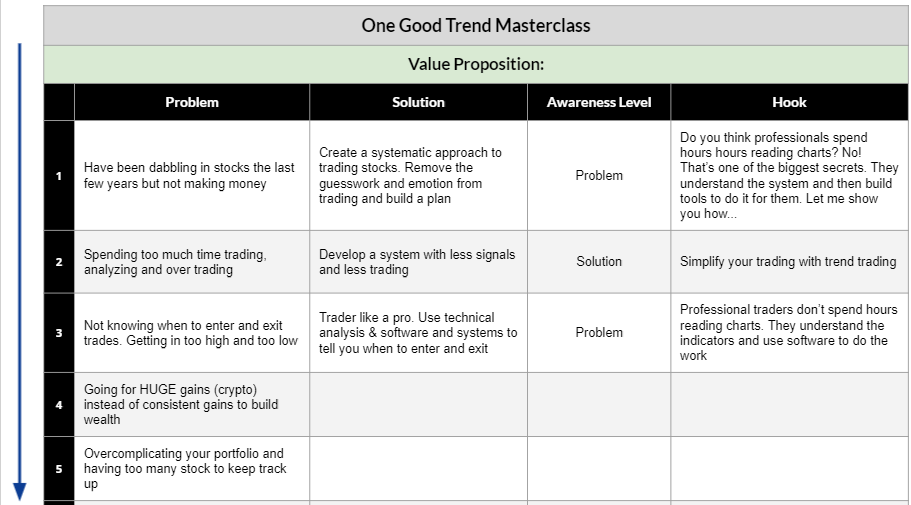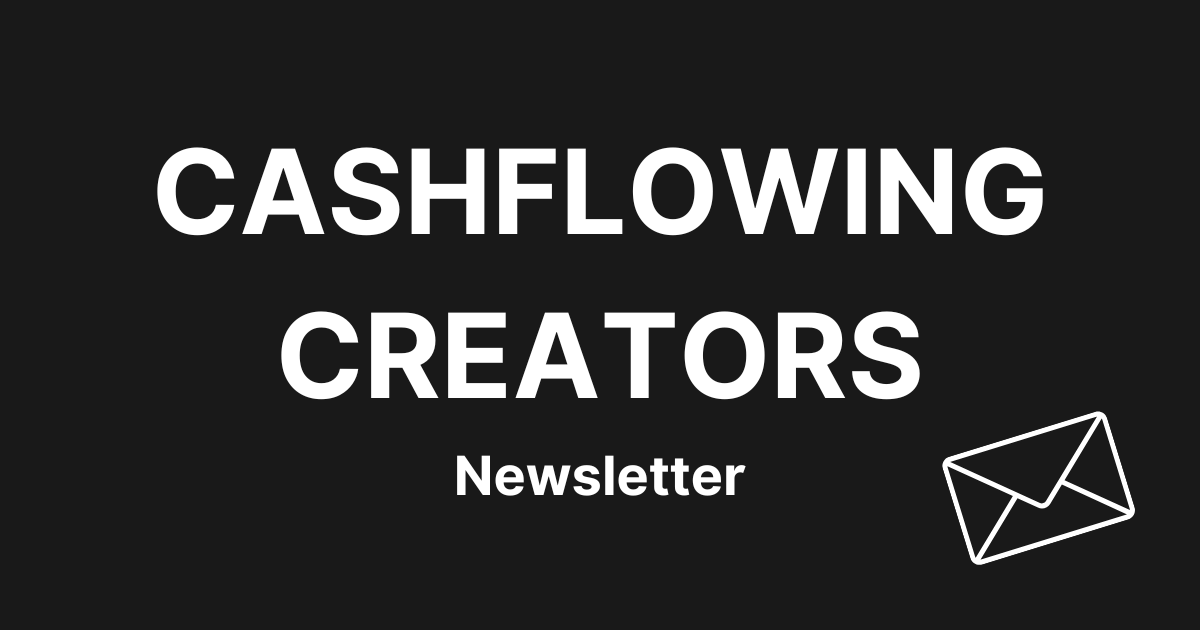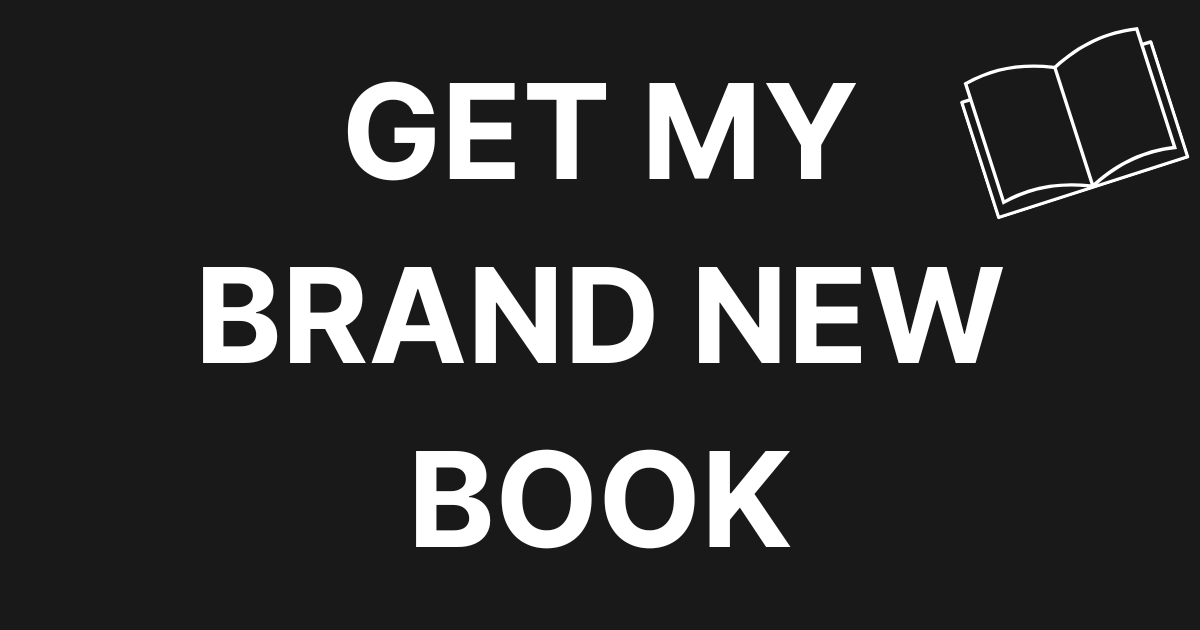A lot has to come together to make a successful Facebook ad – the right targeting, a great image or video, and compelling copy.
Often people focus much more time on the visual creative (the video or the image) leaving the ad copy just mediocre.
Ad copy is equally important and mediocre copy will result in missing out on a huge portion of your market that reads your ad.
The goal of your ads is to pre-frame, pre-qualify & pre-sell the right person (your ideal customer) on clicking your ad, which can seem easier said than done at times.
So how do you create compelling Facebook ads that do just that?
I have a six-step framework with strategies you can use to make your ads more persuasive and better converting.
Get ready to take notes and let’s jump in!
Table of Contents
The Number 1 Rule
The #1 rule to creating great Facebook ad copies – it’s not about you! It’s about your prospects and customers.
You need to show how you can help your customers. If people don’t see a benefit for themselves they simply won’t convert.
It’s about speaking to a pain they have and a benefit you can help them get to alleviate that pain.
A few important things to think of when writing ad copy:
- Don’t beg for attention.
- Don’t run super salesy, clickbait ad copies. It will only make your costs rise.
- Don’t be overly aggressive with speaking to the pain of your customer.
Facebook’s algorithm works in a way that their main goal is for users to have the best experience possible on Facebook so they stay longer on the platform.
If an ad seems too much like an ad (ex: 70% OFF OFFER, this is for YOU, etc.) Facebook will increase the costs to show your ad.
Key Parts Of Your Ad Copy
Here’s some key parts of your ad copy to keep in mind.
1. Your Hook
Your hook is the compelling reason that encourages a prospect or customer to take the action you’re requesting. There are many ways to start your hook. It all depends on the angle/approach you want to take.
2. Your Body Copy
Your copy should explain why your offer is what the market wants and needs.
It should be the vehicle to the “solution/benefit” and speak about the client’s transformation. In other words, it’s the articulation of the hook (also done through ad creative).
3. The CTA
One of the most important elements of your ad is to convince people to click with a Call To Action. It’s the next step you want your audience to take and can directly affect your conversion rates.
Some tips for writing your CTA are:
- Include action words
- Keep it to the point (don’t get longwinded)
- Promote a benefit, not a product
- Ask a question
4. Your Headline
Your headline should reiterate the hook or simply state what they’ll get.
You want to…
- Convey the WHY quickly (why does this matter to the market)?
- Be relevant to your target audience
- Avoid a super salesly looking ad… don’t do things like this… “SUPER FLASH SALE 30% OFF BUY NOW”
Tips for Creating Native Looking Ads
Many times you will want to make ads that mimic the look and feel of the sites and apps they’re placed in, like native ads.
The more you can create an ad that looks and feels like an organic post on Facebook or Instagram, the better the results.
To create native looking ads you need to:
- Write as if you’re speaking to a friend.
- Take off your professional copywriter hat for your first draft.
- Use images that are shot on an iPhone and look very personal.
- Focus on engaging with your audience and not selling your product/service.
Writing Great Facebook Ad Copy
Let’s jump into putting your pen to paper and start writing some great Facebook ad copy.

The image above shows you an example of how you move through the value proposition for your customer.
First you’ll identify the problem, then the solution based on their awareness level, and finally bringing it all together with a hook that grabs that unique customer’s attention.
Let’s break down those steps in more detail.
Use the steps below as a guide to making sure you have everything you need to create a persuasive, compelling, and high-converting ad.
Step 1: Identify The 3 Major Problems Your Customer Is Having
Write down three major problems or things that your ideal customer is struggling with that they want solved in their lives.
Step 2: Identify How Your Product/Service Solves Your Customers Problem
Write down what your product or solution does that best solves your ideal customer’s problem.
Keep this benefit-driven rather than focusing too much on the product itself.
Step 3: Figure Out The Market Awareness Of Your Ad Campaign

How aware is your ideal customer about the problem you are solving? Eugene Schwartz, an icon in advertising established the importance of “customer awareness” to help you answer this question.
Better yet, he systematized it. Here are the five distinct levels of customer awareness.:
Unaware: If they are completely unaware that they have a problem, use stories that are exciting, relevant, dramatic, and controversial to get their attention. Show them that they are like the main character, have the same problem, and require the same solution.
Pain/Problem Aware: If they are aware of their problem but not of any solutions in the market, then lead your message with benefits. Show them that you understand their problem and have a proven solution.
Solution Aware: If they are so aware of their problem that they already know or have tried various solutions, you must lead with proof. They need to believe that your solution is the final solution and something they have not tried yet.
Product Aware: If they already know about your products and benefits but have not purchased, then offer them a deal they can’t refuse. This might be coupons, bundles, limited-time discounts, or risk-reversing guarantees.
Most Aware: If they are aware of many products and their prices, you must win their trust first. Focus on credibility, authority, and social proof that yours is the best product in the market.
Customer awareness level is super handy to understand for determining what type of promotion will work best for different segments of your target audience.
All you have to do is determine which awareness levels your audience falls into.
Step 4: Write Your Ad Hooks
The “hook” of your ad is the “why” that makes people click on it.
Take the major problems from step 1, the benefits/solutions from step 2, the awareness level from step 3, and put them together to create an enticing hook for your customer.
You need to explain the benefits and the value of your offer in order to “sell” it.
Here’s a few ways to approach your hook ideas:
- Proof/Results – This one is the most common. Use reports or case studies to demonstrate PROOF or RESULTS that the customer could experience with your offer. This can create SOCIAL PROOF. For example, part of your ad copy could include, “Join the thousands of people who have already benefited!” Or, explain actual results that have occurred because of your offer.
- Tell a Story – Tell a story and then ask: “Can you relate? If so____ and_____. “ The point here is to try to be narrative with something people can relate to – then provide them with a solution.
- Analogy – It’s like___ for___! You’ll also ___ and____… Using an analogy can be interesting and paint a picture in the readers mind.
- Comparison – __is like___except for____! It presents something people know and explains it’s like that but different/better/more innovative. It helps people situate the product or service in their minds.
- Contrarian – Is there some idea out there that everyone believes that you don’t? Can you kick things off by really going against the grain?
- Novelty – Did you know that you could_____? This applies to novelty products. You need to grasp the attention of people by explaining how new and revolutionary your concept is.
Step 5: Write The Ad Copy For Your Ads
At this step you should have:
- 3 major problems that your ideal avatar is experiencing, so you can write a powerful question to grab their attention.
- 3 ways the customer will benefit by solving that problem for them, so you can make a statement about how you solve this problem for the customer.
- You know where the customer is on the awareness scale, so you know what kind of ads you should be writing for them.
- You have “hooks” that you can use to really grab their attention and tell them “why”
- You have a framework to follow to create the ad.
Now you just have to write 3 – 5 ad copy variations that you want to test with this campaign.
Step 6: Ad Analysis
Before running an ad you can ask yourself these questions:
1. Does my ad include my ideal customer’s self-interest?
2. Am I promising the benefits that my ideal customers want through my product’s performance or offer?
3. Can my ideal customer self identify with the ad copy and imagery?
4. Am I promising a specific outcome?
5. Is my ad emotionally compelling?
6. Is my ad intellectually interesting?
7. Is my ad copy congruent with what is on the landing page for this campaign?
8. Is my imagery congruent with what is on the landing page for this campaign?
Struggling To Come Up With Ideas From Scratch? Use A Swipe File
So, great you have the framework to write a winning Facebook ad but let’s be honest, writing ads is still not always easy. Often you need something to “spark” those creative juices.
Great copywriters keep a swipe file – A place to keep your collection of the great/favorite/top performing ads and creatives.
I keep a folder in my dropbox and screenshot anytime I find a great image or creative out there so I can reference it later.
When you’re not feeling “creative” or ready to write copy but you need to, start going through your swipe file.
Here are some digital places to swipe ads:
Here’s a little additional tip – if you’re ever running short on time to write copy you can outsource your copywriting too. It can be a great way to see how professional copywriters would write content for your business to create extra inspiration for when you’re writing yourself.
Conclusion
Now that you have all the essential ingredients to create an ad that’s compelling and persuasive, it’s time to start creating exactly that for your business.
By really focusing on your customers and following the steps above you’ll be on your way to creating Facebook ads that actually convert!




0 Comments